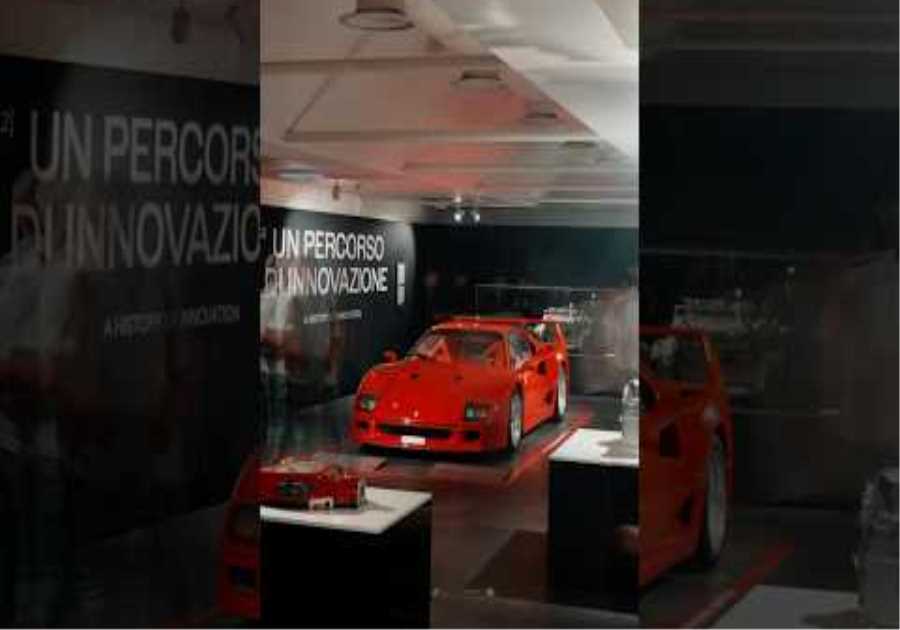
Ever wondered why Formula 1 cars have the names that they have? Well now you can find out.
Terms like the RB18 and the W13 became common place last season and throughout history, there will be many combinations of numbers and letters that mean so much to certain Formula 1 fans.
But naming a Formula 1 car is by no means a straightforward choice. Perhaps you want to name it after the year it will race in or maybe how many seasons you as a team have competed in or maybe if you are Ferrari, you can never really decide.
Either way, we’ve tried to make life a little easier for you by going through the 10 current teams and describing how their cars came to be called what they are.
Red Bull-RB19
Red Bull’s numbering of their cars is pretty straightforward with the RB standing for Red Bull and the number representing how many seasons the team has been competing.
2023 will be their 19th year since they purchased Jaguar and as such, the 2023 challenger will be called the RB19.
Interestingly though, there was no RB17 with Red Bull choosing to use the same chassis for 2021 as they did in 2020 and therefore naming the later version the RB16B. When it came to naming the 2022 car, they decided to skip RB17 as they wanted to continue the trend of naming the cars in line with their season of competition.
Ferrari – Unconfirmed (codenamed ‘Project 675’)
As the oldest team on the grid and one that has been there since the very beginning, it is unsurprising to see Ferrari has a varied history when it comes to the naming conventions of their cars.
The first theme was to name the car after the engines that powered its cars starting with the 246 in 1958 and this continued through to the 60s, 70s before resurfacing in the late 90s.
In the 70s, Ferrari changed the style by adding a letter to denote where the engine was placed which started with the 312B of 1970 which had a three-litre, 12-cylinder boxer engine. The 312 B2 and the 312 B3 followed which is so far pretty straightforward.
But then in 1981, the minds of Maranello ditched their previous naming convention and decided to name the car according to the degree of the engine mounting first followed by the number of cylinders. So the 126C was called that because the 12 cylinders were mounted at 120 degrees and there were six cylinders in the car.
This continued for a short period with Ferrari adding a number after every year until the early 1990s when they again changed the naming convention. This time, they decided to name the car after the number of valves followed by the number of cylinders and what type of gearbox was used.
But if you’ve managed to get your head around that, beware because Ferrari are also big fans of naming cars after the year they drove in. The 156/85, the F1-86 and the F1-87 are all examples of this as is the F2003-GA, which had a reference to the death of Fiat founder Gianni Agnelli.
The Italian team were not done there though and also used naming conventions such as engine/year, chassis number and significant anniversaries such as 2020’s SF1000 to celebrate the team’s 1,000th Grand Prix, at Mugello.
The most recent car, the F1-75, was named in tribute to Enzo Ferrari firing up the first F1 car, the 125 S, in March 1947, 75 years beforehand.
So, with the team having added SF as in Scuderia Ferrari to the names of their cars, logic would suggest that the 2023 car will be called the SF23 but considering it is currently nicknamed Project 675, who knows what they will come up with.
Mercedes-W14
Having got through the jumbled mess that is Ferrari’s car names, thankfully Mercedes’ are a little easier to follow.
The Mercedes convention is rather simple: the W stands for Wagen, meaning car in German and the number is the project number.
The first Mercedes car was 1955’s W196 which was named as such due to the engine it used, the M196, and five decades later when the team returned in 2010, they opted for the W01, representing the first car built in Brackley.
That is the convention they have stuck with ever since with the W14 set to be the 14th car used since the team’s resurfacing.
Alpine-A523
Alpine are another team with a straightforward naming convention with the car’s name being a mix of A500, the name of the F1 project, and the year. So when the team first appeared in 2021, the car was named the A521 followed by the A522 last year.
Before the rebrand, Renault also followed a pretty straightforward pattern. Between 2016 and 2020, the cars were called RS as in Renault Sport followed by the final two digits of the year (ie RS20).
During their first stint in Formula 1, they started with the RS01 in 1977 and kept that name for the following season. Then they started going up in multiples of 10 starting with the RS10 in 1979.
In 1980, the team was renamed Équipe Renault Elf as a subsidiary of the main group and the car name reflected that going from RS to RE which they kept until they left the sport in 1985.
When they returned in 2002, the first car was called the R202 as it was the successor to Benetton’s, the team they had just purchased, B201 and then they went to R23 for 2003 up until R31 when the team again left the sport in 2011.
McLaren – MCL37 (Unconfirmed)
Like Ferrari, McLaren have been in the sport long enough to have had a few different naming conventions over the years but unlike their Italian counterparts, they have at least kept them easy to follow.
Bruce McLaren entered the team with the M2B which was the successor to the M2A development car. That pattern continued for the next few years with the letter changing on the end every time the same chassis was used.
The numbers would prove to be rather inconsistent though as it went from the M2 to the M4 to the M5 to the M7 and a brief run out with the M9 before moving to the M14 for the 1970 season.
Eventually McLaren began to use fewer variants of a model number and would rise up the numbers, reaching M30 in 1980.
The following year saw a dramatic change as Bruce McLaren’s team merged with Ron Dennis’ Project 4 Formula 2 team and with a future icon of F1 advertising on board, the first car of the partnership was called the McLaren Marlboro Project 4 or the MP4.
From here, the naming convention changed with the MP4 always remaining followed by a slash and the model of the car and its variant. So in 1981 it was the MP4/1 and that was succeeded by the MP4/2 in 1984 which was driven by Niki Lauda and Alain Prost.
That format continued all the way up until 2017 when McLaren dropped the MP4 following Dennis’ departure and replaced it with MCL.
The MCL style has continued through to the present day with the 2023 car expected to be named the MCL37.
In 2021, McLaren decided against calling the car the MCL36, which would have made sense following 2020’s MCL35, but instead called it the MCL35M as it kept the same base chassis from the previous year. Unlike Red Bull, McLaren did not skip a number and went to MCL36 for the 2022 season.
PlanetF1 recommends
Legal loopholes, jail and a $400m lawsuit: Meet Alfa Romeo’s new crypto sponsor Stake
Reaction to Paul di Resta’s Sky F1 exit a reminder of F1’s territorial fanbase
FIA president: ‘How on Earth could we say no to someone like GM?’
Alfa Romeo-C42
Easily the most romantic name on the list as when Alfa Romeo joined forces with Sauber in 2019, they continued the latter’s naming style with the C38.
What does that C stand for? Christine, of course, which is the name of founder Peter Sauber’s wife.
Sauber have been using the C prefix since their first entry in 1993 with the C12. This continued all the way up until 2006 when BMW bought a stake in the team and decided the car would have the prefix F1 followed by the last two digits of the year.
However, when BMW sold their stake back to Sauber in 2010, the team returned to the C prefix but skipped the numbers that should have been represented while the team was a BMW car meaning that there is no such thing as the C25, 26, 27 and 28
Whether the C prefix survives once Audi take over in 2026 remains to be seen.
Alfa Romeo also have a long history in Formula 1 and followed a similar pattern to their Italian counterparts Ferrari by naming the car after the engine in the early days. Following a 26-year break, Alfa returned to the grid in 1979 and loosely followed a naming convention dictated by the year the car competed.
Aston Martin-AMR23
It is straightforward for Lawrence Stroll and co. with the 2023 car set to be called the AMR23. This stands for Aston Martin Racing 2023.
That was the same pattern for the team’s first car in 2021 and Racing Point before that followed a similar convention (RP19 etc.)
Haas—VF-23
The origins of Haas’ car name date back to their owner, Gene Haas and his early business days.
In 1988, Haas Automation manufactured their first CNC machine which they named the VF-1, with the V standing for vertical which is the industry standard designation for a vertical mill and the F-1 added by Haas to unofficially designate it as the ‘Very First One’.
As a result, Haas F1 kept that tradition with the VF-16 combining the VF-1 with the year (2016) it was launched. That style has remained ever since with 2023’s car set to be called the VF-23.
AlphaTauri – AT04
As is the case with their sister team, AlphaTauri’s car is named using their initials plus how many years they have been competing as a team so the 2023 car will be called the AT04.
This was also the case for the team when it was Scuderia Toro Rosso with the 2006 car being called the STR1 through until 2019’s STR14.
Williams—FW45
Williams first entered the sport as a customer team of chassis manufacturer March Engineering so the 1977 car was called the March 761 but following that season, Williams have used the same naming convention ever since.
The 1978 was the first time the team designed their own car and it was called the FW06. It took owner Frank Williams’ initials and was the sixth car to be designed by the legendary motorsport figure.
The Williams team have occasionally added letters on the end to signal variants of the same model but by and large have gone from six onwards. Even after the Williams team was sold to Dorilton Capital in August 2020, the cars continued to follow this pattern with 2023’s edition expected to be called the FW45.
Did you miss our previous article...
https://formulaone.news/haas/it-just-felt-so-alien-to-me






